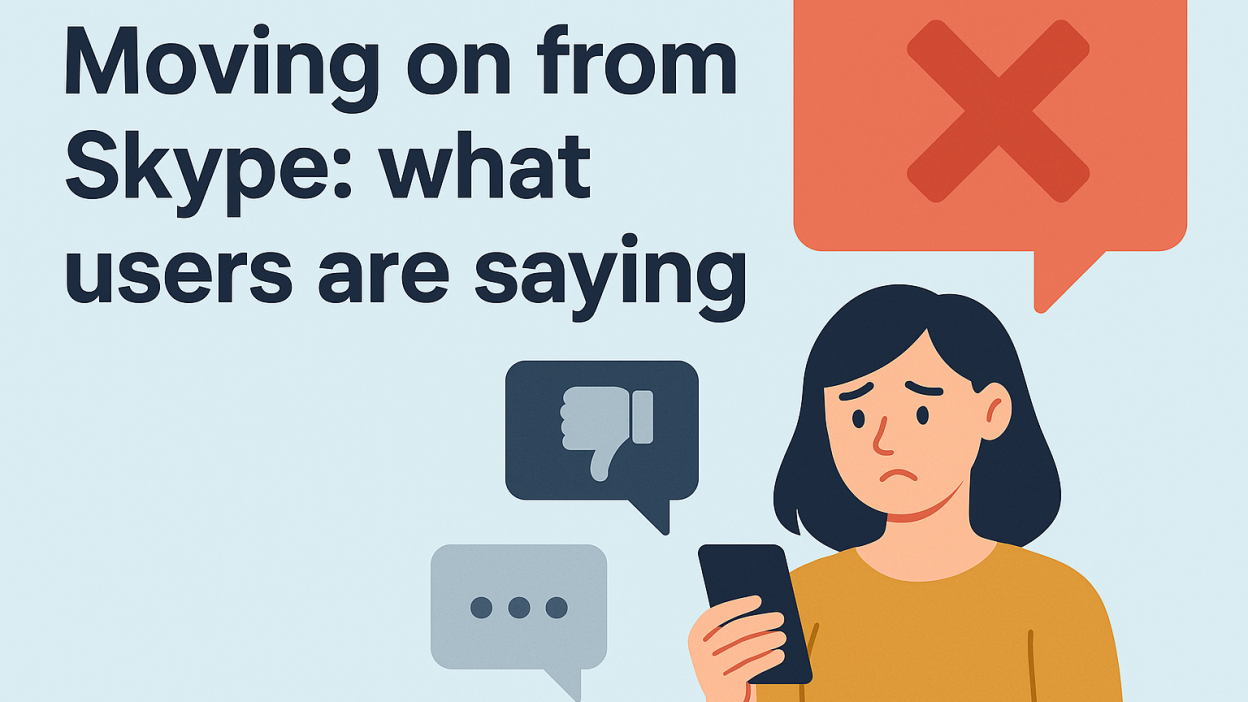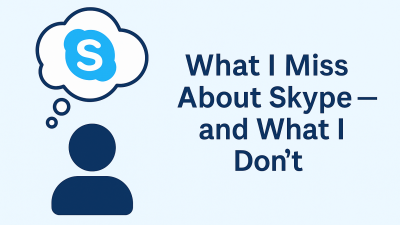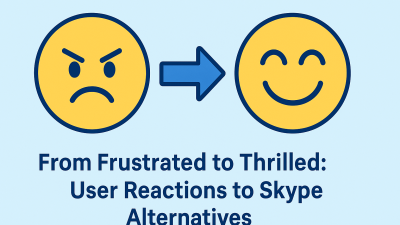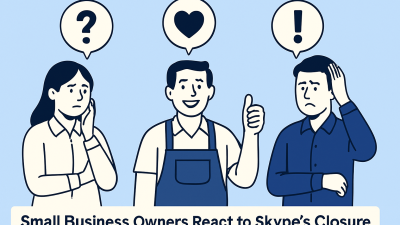For millions of people around the world, Skype wasn’t an app you opened. It was a part of your routine. It was hearing a familiar voice from another timezone, holding eye contact through a pixelated screen, or dialing into a client call with just two clicks. Skype became normal. And in that normalcy, it became invisible — the way any truly dependable tool does.
Now, that familiarity is being taken away. Not slowly, but decisively. On May 5, 2025, Skype will stop working, and with it, a long chapter of internet communication will close. Microsoft says it’s a shift forward. Many users aren’t so sure.
There’s something deeper than technical concern across forums, social threads, and private messages. There’s grief, not just for the platform itself but for what it represented: a connection that didn’t ask for much. Skype didn’t demand workflows, team invites, or anything else. It just… worked.
Why Does Everything Have to Be Complicated Now?
This question keeps surfacing in conversations about the move to Microsoft Teams. People aren’t rejecting change, they’re rejecting the feeling of being forced into something that doesn’t speak their language.
Teams wasn’t designed for the same people who used Skype to call their parents abroad every Sunday or catch up with cousins in Karachi, Toronto, or Manila. It was built for structure. For onboarding. For meetings and task assignments and shared calendars.
So when Microsoft positions Teams as a natural evolution of Skype, many users are left blinking at the screen, wondering where their contact list went, or why there’s a “Files” tab next to their friend’s name.
It’s not that Teams is bad. It’s not what they asked for. And in that mismatch, something subtle but important is lost: the feeling of comfort.
The Human Side of a Shutdown
In online communities, you can trace the emotional spectrum. Some users are calm and methodical, downloading archives, testing new apps, weighing their next move like seasoned travelers. Others are irritated, unsure why their reliable calling app has suddenly turned into a dashboard of tabs they didn’t ask for.
One longtime Skype user wrote:
“I don’t want to ‘manage communication.’ I just want to call my sister and talk.”
Another said:
“I used Skype to interview people. It felt informal but professional. Teams feels like a meeting room with windows I can’t close.”
These aren’t complaints about bugs or lag. They’re reflections of displacement, of being moved out of a digital home and handed the keys to a new place that doesn’t quite feel like theirs.
This is what product decisions often miss. Features matter, yes. But so does emotional fit. People don’t just remember what software did. They remember how it made them feel. Skype made people feel connected. Teams, for many, make them feel… like a guest in someone else’s system.
The Forgotten Audience: Casual Callers and Long-Distance Families
Microsoft has framed this transition as a step toward consolidation, one app to do it all. But that pitch assumes that everyone wants the same things from a communication tool. And that’s where the disconnect grows.
A large slice of Skype’s user base didn’t care about shared whiteboards or threaded replies. They wanted clarity, not complexity. They weren’t managing projects — they were managing long-distance love, family ties, or freelance gigs that ran on rhythm, not structure.
And now, those people are left wondering where they belong. Teams isn’t built for that kind of connection. It offers a dial pad, but only for legacy paid users. It offers messaging, but only after figuring out how to start a new chat, find contacts, and navigate three layers of options.
For someone who just wanted to make a call in under ten seconds, this isn’t progress. It’s noise.
For International Callers, the Gap Feels Even Bigger
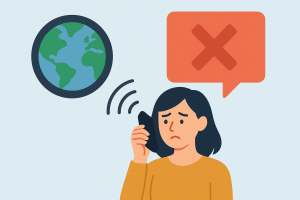
Skype became indispensable in regions where affordable international communication wasn’t easy. For immigrants, students, small businesses, and cross-border families, it was the go-to.
But Teams doesn’t step in to fill that role with the same confidence. Its interface isn’t intuitive for quick global calls. Its pricing structure, where it exists, isn’t as clear. And the shift toward a more enterprise-style UX makes it harder for older users or less tech-savvy callers to stay connected.
In many forums, people are asking the same thing:
“If Teams doesn’t serve this use case, what does?”
The answer doesn’t come from Microsoft. It comes from the community. Platforms like MyTello, designed for fast, low-cost international calls, are emerging not because they market better, but because users are actively searching for simplicity again.
They’re not just moving on from Skype. They’re moving back to tools that prioritize purpose over platform.
Some Are Trying Teams — Others Are Quietly Leaving
Not everyone is clinging to Skype. Some users have stepped into Microsoft Teams, accepted its complexity, and adjusted their habits. They’ve figured out how to hide extra tabs, pin contacts, and treat Teams like a lightweight messenger. For some, that works.
But in real user discussions, Reddit threads, Microsoft Community posts, and Facebook groups, the dominant pattern isn’t adoption. It’s avoidance. People aren’t diving into Teams excitedly. They’re doing it because they feel like they don’t have a choice.
Some install it, try it, and walk away. Others install it, leave it on their desktop, and never click again.
The ones who stay often do so because Teams is already integrated into their workplace. It’s not a personal win, it’s just familiar from 9 to 5. But for personal calls, side projects, or staying in touch across borders, Teams rarely becomes anyone’s favorite. It becomes tolerated.
That quiet rejection speaks louder than any announcement.
Freelancers and Remote Workers Are Rebuilding Their Setup
Skype once filled a strange but essential role for independent professionals. It was casual enough for a quick client check-in, formal enough for job interviews, and flexible enough for remote collaboration.
Now, freelancers are finding themselves in a new kind of scramble. Teams may work if they’re embedded in a company that uses it — but otherwise, it creates more friction than flow.
So, they’re adapting. Many are retooling their communication stack:
-
Calendly + Zoom for calls
-
WhatsApp or Signal for quick updates
-
Google Meet for clients already using Gmail
-
Loom for video messages without meetings
The surprise? No one’s replacing Skype with just one app. They’re stitching together workflows that match how they actually talk, share, and collaborate — because Teams, with all its features, doesn’t shape itself around them.
It’s not about chasing the next Skype. It’s about rebuilding what Skype used to give them: ease, speed, and trust.
People Who Used Skype to Stay in Touch Are Finding Their Own Way
One of the least discussed but most affected groups are those who used Skype as a family connector — parents and grandparents, siblings in different countries, families split across continents.
Skype made cross-border connection feel local. No logins. No links. Just type a name, hit the call button, and hear a voice.
That rhythm is broken now. Many older users don’t want to learn a new app, especially one with channels, activity feeds, and onboarding popups. They didn’t ask for a “hub.” They just wanted to talk.
Their children and grandchildren are looking for alternatives that require less explaining. In many cases, the choice lands on platforms like:
-
WhatsApp, already widely used, even if the call quality is inconsistent
-
Zoom, if the call is scheduled in advance
-
MyTello, especially when low-cost calling is the goal and the recipient doesn’t need the app
What matters to these users isn’t brand alignment. It’s usability. They’ll go wherever the call connects without confusion. If Teams doesn’t offer that, they’ll quietly opt out.
The Real Frustration: It’s Not the Change — It’s the Communication
Many users would have accepted Skype’s shutdown if the transition felt intentional, respectful, and supported. But for a large portion of the community, the change has felt unannounced, unexplained, and underdelivered.
There was no proper farewell. No real roadmap. No tailored Teams experience for personal users. No migration wizard that walked people through the shift with empathy or care.
Instead, users were directed to an enterprise tool with corporate language and no sign of the familiar.
That’s what many are reacting to, not just the loss of a product, but the absence of thoughtful guidance. It felt like a shrug. It felt like, “You’ll figure it out.”
For a tool that powered billions of hours of calls between loved ones, that wasn’t enough.
What People Are Wishing Microsoft Had Done Instead

Across communities, suggestions repeat themselves. They’re not complex. They’re not unreasonable. But they were missed.
-
A simplified “Skype mode” inside Teams, just messaging and calling, no fluff
-
A focused Teams mobile app for international calling
-
A direct replacement app, lighter than Teams but modernized from Skype
-
Better visual continuity so users could orient themselves in a new interface
-
A retirement timeline with milestone reminders and video walk-throughs
These weren’t just wishlist items. They were a chance to preserve trust. Microsoft didn’t need to keep Skype alive forever. But it could have honored it more deliberately, and supported users with tools that respected how they actually used it.
So What Now? Tools People Are Actually Using to Replace Skype
Despite Microsoft pushing Teams as the default, users have started forming their own paths. No single tool has replaced Skype, but different groups are settling into tools that feel right for their kind of conversation.
-
MyTello is gaining traction among those who used Skype primarily for affordable international calls. It’s fast, clean, and doesn’t ask the person on the other end to install anything.
-
Telegram is popular for cross-platform messaging and light video calls, especially where privacy is a concern.
-
Zoom remains a favorite for people who need reliability in scheduled calls, especially with screen sharing.
-
WhatsApp and Signal continue dominating the mobile-first messaging space — useful when both parties already use them.
What’s missing isn’t the technology, it’s the feeling Skype once created: one place, one button, one way to stay close. That’s harder to replicate, and no one’s nailed it yet. But users aren’t waiting for Microsoft. They’re building their own bridges.
Conclusion: Skype May Be Ending, but Connection Isn’t
This isn’t just a shutdown. It’s a shift in how we relate to the tools we once took for granted.
Skype didn’t just enable communication. It became a rhythm. The sound of a loved one picking up. The echo of a long-distance laugh. The awkward video delay that somehow made moments feel more human.
Now, users are writing the next chapter on their own. Some are adapting. Some are resisting. Most are still figuring it out.
But the truth is this: connection finds a way. Whether it’s Teams, MyTello, or a new tool yet to emerge, people will keep calling. They’ll keep showing up. They’ll keep talking — not because of a product, but because of the people on the other end.
Skype might be gone soon. But the conversations? They’ll continue, stronger than software, and louder than any shutdown.

